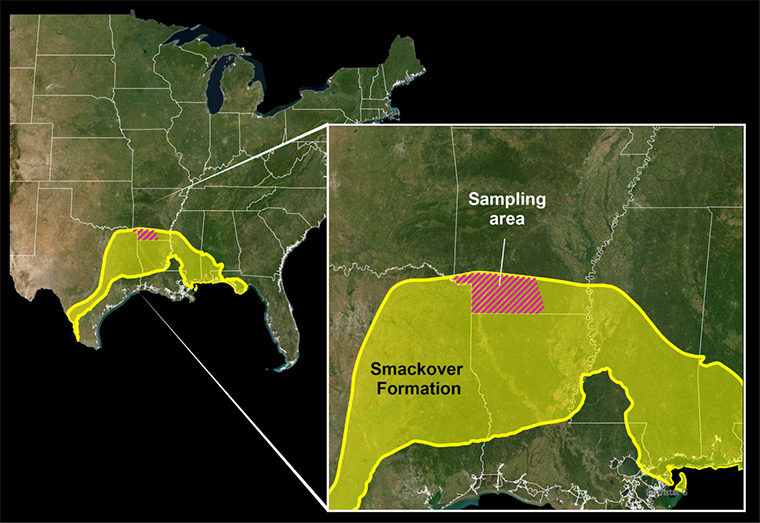RESTON, Va. — Using a combination of water testing and machine learning, a U.S. Geological Survey-led study estimated between 5 and 19 million tons of lithium reserves are located beneath southwestern Arkansas. If commercially recoverable, the amount of lithium present would meet projected 2030 world demand for lithium in car batteries nine times over.
The study’s novel methodology, carried out collaboratively by the USGS and the Arkansas Department of Energy and Environment’s Office of the State Geologist, made it possible to quantify the amount of lithium present in brines located in a geological unit known as the Smackover Formation. Extracting lithium from brines co-produced during oil and gas operations provides an opportunity to extract a valuable commodity from what would otherwise be considered a waste stream.
“Lithium is a critical mineral for the energy transition, and the potential for increased U.S. production to replace imports has implications for employment, manufacturing and supply-chain resilience. This study illustrates the value of science in addressing economically important issues,” said David Applegate, USGS Director.
The Smackover Formation is a relic of an ancient sea that left an extensive, porous, and permeable limestone geologic unit that extends under parts of Arkansas, Louisiana, Texas, Alabama, Mississippi, and Florida. It dates to the Jurassic geological time period and is known for its rich deposits of oil and bromine. In recent years, the Smackover Formation has also gained attention for potential lithium in brines—high-salinity waters associated with deep salt deposits.
“Our research was able to estimate total lithium present in the southwestern portion of the Smackover in Arkansas for the first time. We estimate there is enough dissolved lithium present in that region to replace U.S. imports of lithium and more. It is important to caution that these estimates are an in-place assessment. We have not estimated what is technically recoverable based on newer methods to extract lithium from brines,” said Katherine Knierim, a hydrologist and the study’s principal researcher.
Global demand for lithium, a critical mineral essential for battery production, has increased substantially in recent years. This trend is projected to persist as the transition from fossil fuels to electric and hybrid vehicles intensifies, underscoring the mineral’s growing significance in energy technology advancements.
The U.S. relies on imports for more than 25% of its lithium. The USGS estimates there is enough lithium brought to the surface in the oil and brine waste streams in southern Arkansas to cover current estimated U.S. lithium consumption. The low-end estimate of 5 million tons of lithium present in Smackover brines is also equivalent to more than nine times the International Energy Agency’s projection of global lithium demand for electric vehicles in 2030.
The USGS predictive model provides the first estimate of total lithium present in Smackover Formation brines in southern Arkansas, using machine learning, which is a type of artificial intelligence. Samples from Arkansas were analyzed by the USGS Brine Research Instrumentation and Experimental lab in Reston, VA, and then compared with data from historic samples within the USGS Produced Waters Database of water from hydrocarbon production. The machine learning model was then used to combine lithium concentrations in brines with geological data to create maps that predict total lithium concentrations across the region, even in areas lacking lithium samples.
“The USGS – and science as well– works best as a partnership, and this important research was possible because of our strong partnership with the Office of the Arkansas State Geologist,” said Dr. Knierim.
Since 1879, the USGS has been the nation’s primary source of impartial scientific information on geologic, energy and mineral resources. The USGS also tracks lithium production, demand and imports in the U.S. as part of its role mandated by the Energy Act of 2020 to maintain the whole of government List of Critical Minerals.
Tagged with battery, lithium





